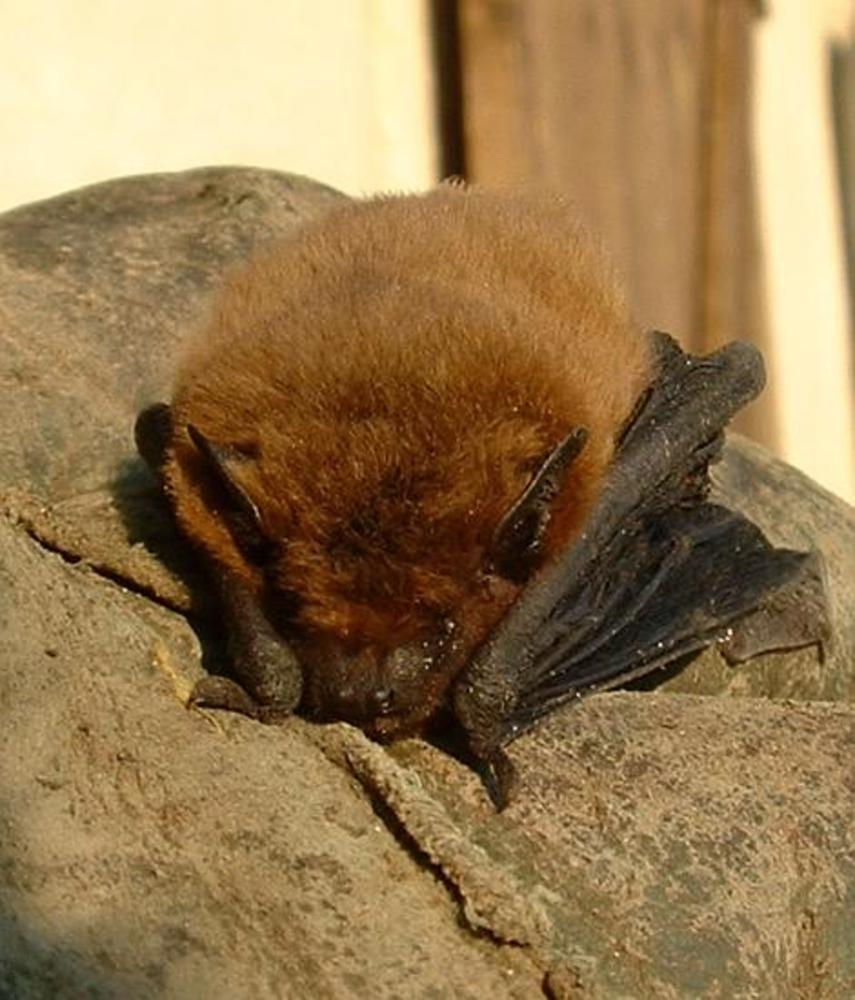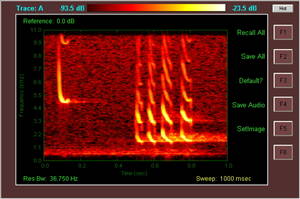Becoming a Bat Detective - Planet Earth Online
Interview with
Christmas is approaching, Halloween is long gone and those black rubber bats have been put away and stored for another year. Even real bats are currently in hibernation - but if you're interested in citizen science and learning more about how these mammals communicate, then stay tuned - as ecologists recently developed the first bat detector software that can be used throughout Europe.
It's called I-BatsID and with it we can all become bat detectives. Planet Earth podcast presenter Sue Nelson met up with Professor Kate Jones, Chair of Ecology and Biodiversity at the University College London, and Charlotte Walters - from the Zoological Society of London - to find out how it works.
 Charlotte - We collected an echolocation call library of calls from species all over Europe collected in lots of different habitats and in different situations and we used this to train the software to identify differences between the different calls. So then when we introduce unknown calls to the software it can tell us which species it is and with a probability of how certain it is.
Charlotte - We collected an echolocation call library of calls from species all over Europe collected in lots of different habitats and in different situations and we used this to train the software to identify differences between the different calls. So then when we introduce unknown calls to the software it can tell us which species it is and with a probability of how certain it is.
Sue - So each species of bat has its own unique identification?
Charlotte - Yes, they all have calls that vary slightly. Some species their calls are really different so we can play you some of the calls - if we play a Rhinolophus call it sounds like this...
Charlotte - And a different type of bat, Pipistrelles has calls which sound like this...
Sue - That sounded more like a bird, cheeping.
Charlotte - These calls are slowed down ten times, so you've got to imagine the actual sound that that is making is ten times faster and ten times higher pitched than these sounds, but you can tell there are differences between the calls that we can use for identification purposes.
Sue - Now, Kate, you are in charge today with your finger on the mouse playing us some of those calls, you can actually see on your computer screen what the echo looks like as well.
Kate - What we're using here is transforming the actual raw data, the raw sounds, so we're using an FFT transfer, so fast fourier transform of the data, which takes tiny bits out of each of the raw data so it becomes a much simpler signal. It turns out that when you do that with bat calls they tend to have a characteristic shape. The ones that your heard before, the kind of ee, ee, that were a constant frequency, they look very flat. But when you have calls which have got a more chirpy sound they have bits of frequency modulation, so they sound more chirpy, so that's where you get a kind of a vertical line straight down and then you may get a bit of constant frequency at the end.
So, if I just play these again you can hear that... And then these are the flat ones...
There are other calls that bats make as well. Some of them do searching calls which we've been showing you.
 These are social calls which they make to attract mates to communicate with each other, which are more trill-like. You also get bats which when they're searching they'll emit a search phase call and get the echo back so that they can figure out where they are where their food is, but when they get closer to an insect or an object they need much more information about it. So they will do a feeding buzz. On some detectors it sounds like someone blowing a raspberry, but I will just play it for real...
These are social calls which they make to attract mates to communicate with each other, which are more trill-like. You also get bats which when they're searching they'll emit a search phase call and get the echo back so that they can figure out where they are where their food is, but when they get closer to an insect or an object they need much more information about it. So they will do a feeding buzz. On some detectors it sounds like someone blowing a raspberry, but I will just play it for real...
Sue - That sounds like a budgerigar! And there is now a way, a citizen science project, that people can help identify these bats as well.
Kate - We have all these volunteers that go out and collect data in a monitoring programme called iBats and we get the data back and we have over two million files that they send us. So what we try and do is go through it with some automatic filters but those filters aren't very good at the moment, so what we're trying to do is develop new ways of going through them automatically and trying to link it up to iBatsID so that it's all one tool.
At the moment, you go through and you find a call, you take the parameters and then you feed it into the software ID tool, but actually what we want to do is to integrate that all together. The first step on that is to look at all the files and try to label all that data.
We have launched a new site called
Bat Detective which anyone can log on and help us look at bats. So, you go onto the site, sign in, and then you can help us classify where these calls are and hunt for these calls in the recordings...










Comments
Add a comment